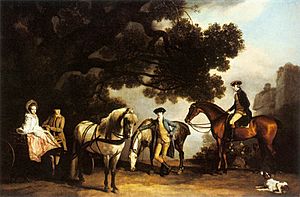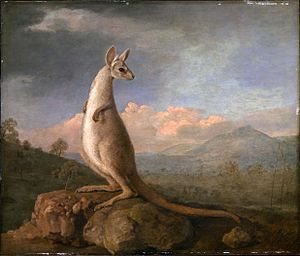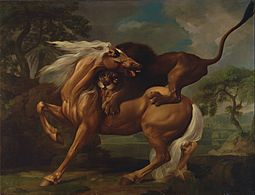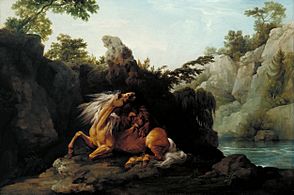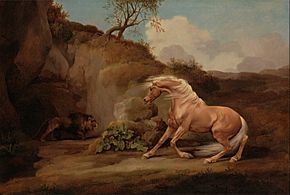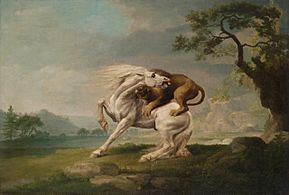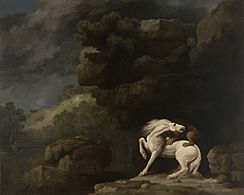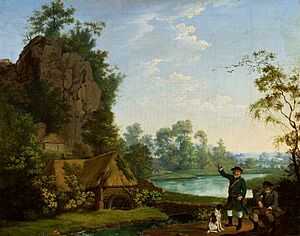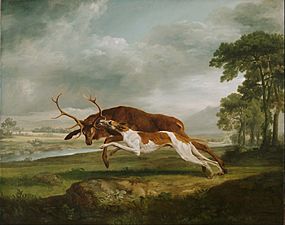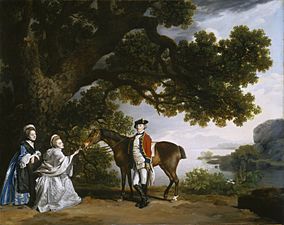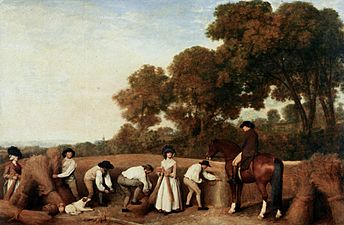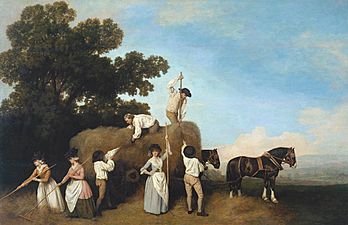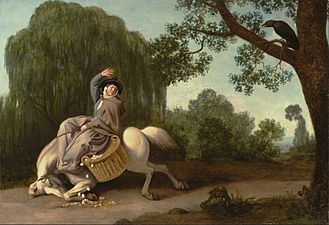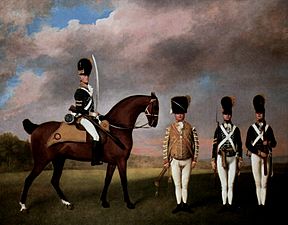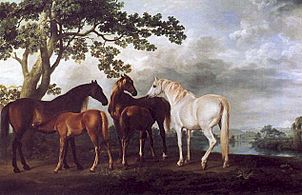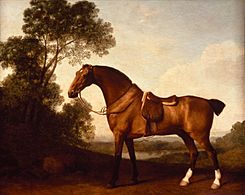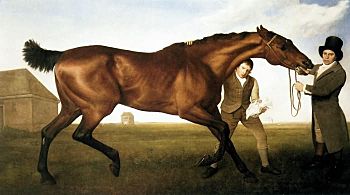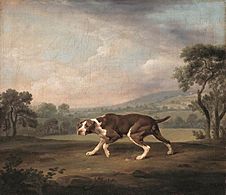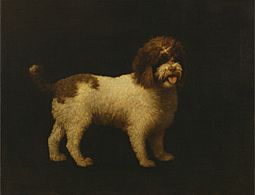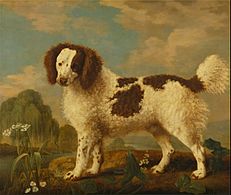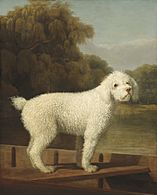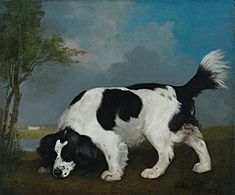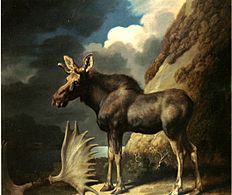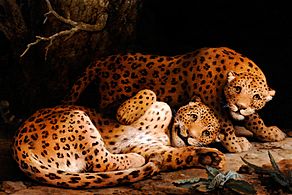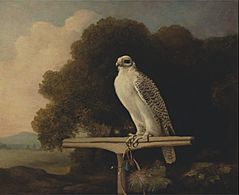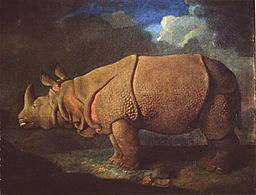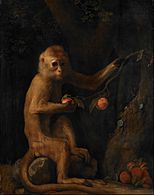George Stubbs facts for kids
Quick facts for kids
George Stubbs
|
|
|---|---|
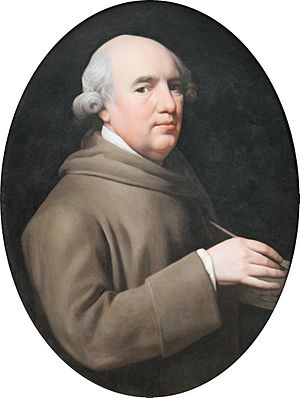
A self-portrait by George Stubbs
|
|
| Born | 25 August 1724 |
| Died | 10 July 1806 (aged 81) |
| Nationality | English |
| Occupation | Painter |
|
Works
|
A Lion Attacking a Horse, Whistlejacket |
| Movement | Romanticism |
George Stubbs (born August 25, 1724 – died July 10, 1806) was a famous English painter. He is best known for his amazing paintings of horses. George Stubbs taught himself how to paint. He didn't learn from other famous artists of his time, like Reynolds or Gainsborough.
Stubbs painted many different things, including historical scenes. But he was truly great at painting animals. This was probably because he loved studying their bodies. His series of paintings showing a lion attacking a horse are important early examples of the Romantic art movement. This movement became popular in the late 1700s. His famous painting, Whistlejacket, can be seen at the National Gallery, London.
Contents
About George Stubbs' Life
George Stubbs was born in Liverpool, England. His father, John Stubbs, worked as a currier, which is someone who prepares leather. We don't know much about Stubbs' early life. Most of what we know comes from notes written by his friend, Ozias Humphry. Humphry wrote these notes after talking with Stubbs when he was 70 years old.
Stubbs worked with his father until he was about 15 or 16. Then he told his father he wanted to be a painter. His father agreed, as long as George could find a good teacher. Stubbs briefly worked with a painter named Hamlet Winstanley. He got to study paintings at Knowsley Hall. But he soon left because they disagreed about which paintings he could copy.
After that, Stubbs taught himself art. He had loved studying anatomy (the structure of bodies) since he was a child. Around 1744, he moved to York to study anatomy more deeply. From 1745 to 1753, he painted portraits there. He also studied human anatomy with a surgeon named Charles Atkinson. One of his first surviving works was illustrations for a book about midwifery (helping with childbirth).
In 1754, Stubbs traveled to Italy. He later said he went there to prove that nature is always more beautiful than art. Once he was sure of this, he decided to return home. In 1756, he rented a farmhouse in Lincolnshire. He spent 18 months studying and dissecting horses there. His common-law wife, Mary Spencer, helped him. He moved to London around 1759. In 1766, he published his famous book, The Anatomy of the Horse.
Even before his book came out, important people saw Stubbs' drawings. They realized his horse paintings were much more accurate than those by earlier artists. In 1759, the 3rd Duke of Richmond asked him to paint three large pictures. Soon, Stubbs' career was very successful. By 1763, he had painted for several dukes and lords. He was able to buy a house in Marylebone, a fancy part of London. He lived there for the rest of his life.
A very famous painting is Whistlejacket. It shows a racehorse standing on its back legs. The 2nd Marquess of Rockingham asked him to paint it. This painting is now in the National Gallery. Whistlejacket and two other paintings for Rockingham were unusual because they had plain backgrounds.
Throughout the 1760s, Stubbs painted many pictures of horses. Sometimes he included dogs or grooms (people who look after horses). He always painted the grooms as real individuals. He also painted portraits of people and groups. From 1761 to 1776, he showed his art at the Society of Artists of Great Britain. In 1775, he joined the more important Royal Academy of Arts.
Stubbs also painted animals from faraway lands. These included lions, tigers, giraffes, monkeys, and rhinoceroses. He could see these animals in private zoos.
His painting of a kangaroo was the first time many people in England saw this animal. He became very interested in the idea of a wild horse being attacked by a lion. He painted many different versions of this scene. These paintings became well known through engravings (prints) of his work.
Stubbs also painted historical scenes. But these are not as famous. In the late 1760s, he started painting on enamel. In the 1770s, Josiah Wedgwood helped him create new, larger enamel panels. Stubbs hoped to make a lot of money from his enamel paintings. But this project actually put him in debt.
In the 1770s, he started painting single portraits of dogs. He also got more requests to paint hunting scenes with packs of hounds. He continued to paint even when he was old. In the 1780s, he created a series called Haymakers and Reapers. In the early 1790s, the Prince of Wales became his patron. Stubbs painted the Prince on horseback in 1791.
His last project began in 1795. It was called A comparative anatomical exposition of the structure of the human body with that of a tiger and a common fowl. He made 15 prints from this project between 1804 and 1806. He died before he could finish it. George Stubbs passed away at age 81 on July 10, 1806. He died in the same house in London where he had lived since 1763. He was buried on July 18 in the graveyard of St Marylebone Parish Church.
Stubbs' son, George Townly Stubbs, also became an engraver and printmaker.
Paintings of a Lion Attacking a Horse
George Stubbs started painting lions attacking horses around 1762 or 1763. He explored this idea in at least 17 different paintings over 30 years. These paintings are some of his most famous and important works. They are considered early examples of the Romantic movement in art. This was even before other famous Romantic artists like William Blake or Eugène Delacroix.
These paintings show the strong feelings and terror of the animals. As Stubbs painted more of them, the feeling of horror seemed to spread across the whole landscape.
Most of these paintings are oil on canvas. But some are enamel on copper. There are also original prints and even a clay model. Stubbs painted the white horse from one of the King's horses. He was able to study a real lion at Lord Shelburne's private zoo.
The first painting in this series was A Lion Attacking a Horse (around 1762-63). The 2nd Marquess of Rockingham asked him to paint it. It is now at the Yale Center for British Art. An art historian named Basil Taylor said Stubbs showed this theme in three main parts:
- Episode A: A lion far away from a scared horse.
- Episode B: A lion close to a scared horse.
- Episode C: A lion on the horse's back, biting it.
Stubbs actually painted "Episode C" first. Later, he was inspired to paint the moments leading up to that dramatic scene.
For a long time, people thought Stubbs saw a lion kill a horse in North Africa. They believed this experience inspired his paintings. However, research in 1965 showed that Stubbs probably never went to Africa. The real inspiration was likely an old Roman sculpture he saw in Rome in 1754. This sculpture, called Lion Seizing a Horse, is very famous. Many artists copied it, and Stubbs' own patron, Henry Blundell, had a copy.
George Stubbs' Legacy
For a long time, George Stubbs was not seen as a major artist in Britain. But in the mid-1900s, art historians and collectors started to appreciate his work more. Two important people who helped make Stubbs famous were Basil Taylor and Paul Mellon. Paul Mellon bought his first Stubbs painting in 1936.
Mellon eventually collected the largest number of Stubbs paintings in the world. These paintings are now part of the Yale Center for British Art in Connecticut, USA. In 2011, one of Stubbs' paintings, Gimcrack on Newmarket Heath, sold for a record £22.4 million (about $30 million US dollars).
The Royal Collection of the British royal family owns 16 paintings by Stubbs.
The National Maritime Museum in Greenwich, London, bought two Stubbs paintings. They raised £1.5 million from the public to do this. These paintings, The Kongouro from New Holland and Portrait of a Large Dog, were both painted in 1772. They show a kangaroo and a dingo. These were the first pictures of Australian animals in Western art.
Stubbs' work has been shown in many exhibitions. The Tate Britain and the Yale Center for British Art held the largest exhibition of his work in 1984.
Gallery
Horses
Dogs
Exotic Wildlife
More Artworks by George Stubbs
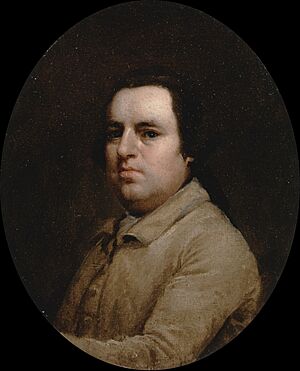
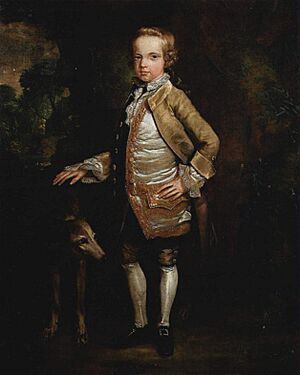
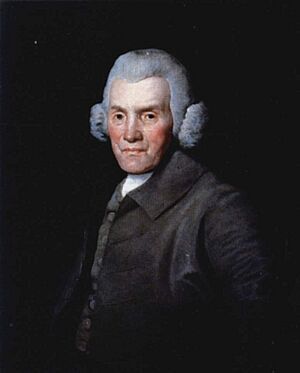
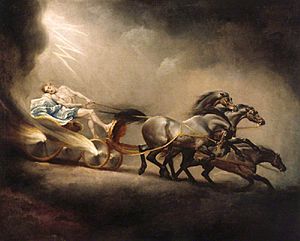
Here are some of George Stubbs' artworks, grouped by where they are kept:
- At the Yale Center for British Art
|
- At the Tate Gallery
|
- At the Royal Collection
|
- At the National Museums Liverpool
|
- At the National Gallery, London
- Whistlejacket (1762)
- The Milbanke and Melbourne Families (around 1769)
- The Kongouro from New Holland (1772)
- Portrait of a Large Dog (1772)
- The Moose (1770)
- The Nilgai (1769)
See also
 In Spanish: George Stubbs para niños
In Spanish: George Stubbs para niños
- Animal art
- English school of painting


